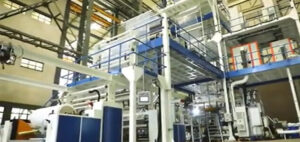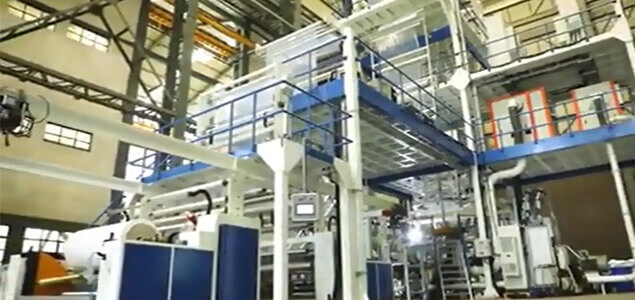Injection moulding machines have transformed manufacturing processes worldwide, offering efficiency, precision, and versatility. In 2024, these machines continue to redefine how products are made, impacting various industries from automotive to consumer goods. Let’s dive into how injection moulding machines are shaping the future of manufacturing.

Table of Contents
| Sr# | Headings |
|---|---|
| 1 | Introduction to Injection Moulding Machines |
| 2 | History and Evolution |
| 3 | Types of Injection Moulding Machines |
| 4 | Key Components and Working Principle |
| 5 | Applications Across Industries |
| 6 | Advantages Over Traditional Manufacturing |
| 7 | Environmental Impact |
| 8 | Future Trends and Innovations |
| 9 | Challenges Faced |
| 10 | Conclusion |
Introduction to Injection Moulding Machines
Imagine a world where complex shapes and intricate parts can be produced swiftly and precisely, all thanks to injection moulding machines. These machines are at the forefront of modern manufacturing, enabling mass production of everything from plastic toys to medical devices. How do they work, and why are they such a big deal in 2024?
History and Evolution
From Manual to Automated: The Journey of Moulding Machines
Injection moulding traces its roots back to the late 19th century when celluloid was first used to create simple products. Over the decades, advancements in materials and technology led to the development of automated injection moulding machines. Today, these machines are highly sophisticated, integrating robotics and AI for enhanced productivity and quality control.
Types of Injection Moulding Machines
Variety in Functionality: Understanding Different Types
There are several types of injection moulding machines, each tailored to specific manufacturing needs. From hydraulic to electric and hybrid machines, the choice depends on factors like production volume, material type, and desired precision. Electric machines, for instance, offer energy efficiency and faster cycles, making them ideal for high-precision applications.
Key Components and Working Principle
Inside the Machine: How It Gets the Job Done
At its core, an injection moulding machine consists of a hopper, a screw conveyor, heated barrel, and a mould assembly. The process begins with raw material fed into the hopper, which then travels through the heated barrel where it melts. The molten material is injected into a mould cavity under pressure, where it cools and solidifies into the desired shape.
Applications Across Industries
From Automotive to Healthcare: Where Injection Moulding Shines
The versatility of injection moulding machines allows them to be indispensable across various industries. Automotive manufacturers rely on these machines for producing intricate parts, while healthcare sectors use them to create sterile medical equipment. Even consumer goods benefit, with the ability to mass-produce durable and cost-effective products.
Advantages Over Traditional Manufacturing
Efficiency, Precision, and Cost-effectiveness
Compared to traditional manufacturing methods like machining and casting, injection moulding offers significant advantages. It enables high-volume production with minimal waste, ensures consistent part quality, and reduces labor costs. The ability to use multiple materials simultaneously also expands design possibilities, fostering innovation in product development.
Environmental Impact
Towards Sustainable Manufacturing
In an era increasingly focused on sustainability, injection moulding machines play a crucial role. They minimize material waste through efficient use of raw materials and recyclable plastics. Modern machines are also designed to optimize energy consumption, contributing to lower carbon footprints compared to older manufacturing technologies.
Future Trends and Innovations
What Lies Ahead: Technological Advancements
Looking forward, the future of injection moulding machines is driven by technological innovations. Expect to see advancements in machine connectivity (Industry 4.0), further automation with AI and machine learning, and improvements in biodegradable materials. These innovations aim to make manufacturing even more efficient, responsive, and environmentally friendly.
Challenges Faced
Navigating Obstacles in the World of Moulding
Despite its many benefits, injection moulding faces challenges such as initial setup costs, particularly for small-scale production. Quality control also remains critical, as defects can arise from material inconsistencies or machine malfunctions. Addressing these challenges requires ongoing technological advancements and stringent quality assurance protocols.
Conclusion
In conclusion, injection moulding machines have not only revolutionized manufacturing in 2024 but continue to push boundaries in efficiency, innovation, and sustainability. As industries evolve and consumer demands change, these machines will remain a cornerstone of modern production processes.
FAQs About Injection Moulding Machines
1. What materials can injection moulding machines use? Injection moulding machines can process a wide range of materials, including plastics, metals, ceramics, and some composite materials.
2. How long does it take to set up an injection moulding machine? The setup time for an injection moulding machine varies depending on factors like machine size, complexity of the mould, and material type. It can range from hours to days.
3. Are injection moulding machines environmentally friendly? Yes, modern injection moulding machines are designed to be environmentally friendly by minimizing waste and optimizing energy use.
4. What industries benefit the most from injection moulding? Industries such as automotive, healthcare, consumer goods, electronics, and packaging benefit significantly from injection moulding technology.
5. How do injection moulding machines contribute to product innovation? Injection moulding allows for the production of complex shapes and parts with high precision, enabling manufacturers to innovate in product design and functionality.
